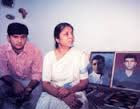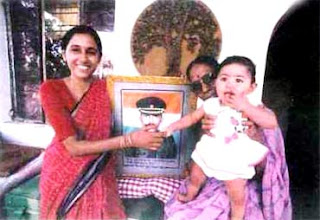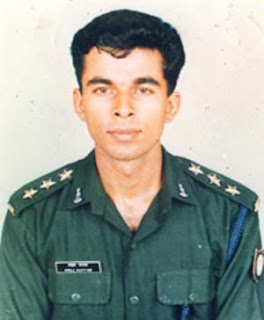Kargil War Heroes – Part 8
Carrying forward the family legacy,
Capt. Vijyant Thapar
joined the armed forces. His family had served in the Army for a long
time. In fact, he was named after the name of the main battle tank of
the army. His great grandfather
Dr. Capt. Karta Ram Thapar, his grandfather
Mr. J.S. Thapar, and his father
Col. V.N. Thapar
all served the Army during their professional lives. Vijyant’s
grandfather encouraged him to join the Army. Capt. Vijyant’s father
retired after 37 years’ service in 1999 and in the same year Capt.
Vijyant was commissioned.
Capt. Vijyant then joined the 2 Rajputana Rifles at Gwalior. The
battalion then moved to Kashmir to check counter insurgency. While still
involved in this counter insurgency, orders were received for the unit
to evict the enemy who had occupied Tololing, Tiger Hill, and adjoining
heights.
Capt. Vijyant with his troops moved to the Drass sector under Col.
M.B. Ravindernath, commanding officer, and his company commander Major
Padmapani Acharya. Initial attempts were no good. On the night of June
12, 1999, Capt. Vijyant Thapar led his platoon to capture a Pakistani
post called Barbad Bunker. His diary notes show how in close combat he
killed two soldiers but was disappointed at not being able to capture
the two enemy soldiers alive.
After the victory of Tololing, he spoke to his mother on a V Sat
telephone and proudly said, “Mumma, we have captured Tololing.” 2
Rajputana Rifles was then given the task of captaining Three Pimples,
Knoll. Capt. Vijyant Thapar aka ‘Robin’ fought like a valiant and true
soldier. These forbidding heights were held by enemy Northern Light
Infantry (NLI). The troops of NLI (Pakistan) had all the advantages –
well entrenched in strongly prepared positions,
well stocked with precipitous slopes on both sides. While Indian troops
were devoid of cover. With almost vertical climbs at an altitude of
15000 ft and a temperature of -15 °C, it was indeed an impossible
mission.

There was intense artillery shelling and heavy bombardment. Some
brave soldiers lost their lives and some more were injured, causing the
attack to be disrupted for a short while. However, Capt. Vijyant was a
brave-heart. With his undying spirit, love to serve the nation, and
tremendous urge to capture Knoll, he gathered himself and moved through a
ravine to face the enemy with the remaining soldiers.
While the exchange of fire was going on, Capt. Vijyant along with his
platoon secured a foothold on Knoll. By this time, his company
commander Major Padmapani Acharya had been killed. This further angered
Capt. Vijyant and he surged ahead with his colleague Naik Tilak Singh.
There were two enemy machine guns firing towards them. After about an
hour and a half of fierce exchange of bullets, Capt. Vijyant moved ahead
to kill the enemy. Suddenly, a burst of fire struck him on his head. He
fell in the arms of his comrade Naik Tilak Singh and closed his eyes
forever. The victory at Knoll on 29 June, 1999, is a saga of bravery
unmatched, and unbounded grit and determination.
Capt. Vijyant was awarded India’s high military honour, the Vir
Chakra by the President of India, for his acts of bravery during the
Kargil War. In an exchange of mails, Capt. Vijyant Thapar’s father, Col.
V. N. Thapar told
me that he is grateful for the fact that the nation still continues to remember his son:
“Sixteen years after we lost our son in the Kargil war
your mail was most thoughtful. Thanks. It is this support that has
sustained us through these years. Young men like Vijyant did what the
nation expected of them – their duty. Actually, the war at Kargil
brought the best in the Indian nation – those like Capt. Vijyant, who
fought bravely and fell honourably to redeem India’s sanctity and the
countrymen who showered their love and their support for the brave
hearts. We, of course, feel proud of what he has done, but losing a
young son is painful and we go through it every day of our life.
Kargil is already a distant memory. We don’t want the legacy of the
young men like Capt. Vijyant to fade and be lost to the coming
generation of Indian, who have a right to know what their previous
generation did and be inspired.”
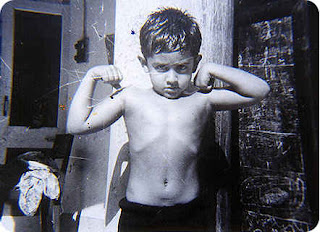 |
| Capt. Vijyant Thapar in his childhood days |
Even as a child, the captain always thought about others more than
himself. As a person, he was very warm hearted and considerate. He
always wanted to be in the Army. His favourite toys were guns. He would
wear his father’s peak cap, take his cane, and march around like an
officer. At the age of four or five, he had already fired a pistol
sitting in his dad’s embrace.
His brother, Tarun Thapar says, “Robin’s sacrifice has deeply moved us all. He will always remain in our hearts.”
During his training, Capt. Vijyant did very well and got the silver
medal for standing second in the order of merit in the first term. He
also got a Gold Medal in Water Polo. He was a very principled and
disciplined person and nothing was more important to him than his
nation, India.
At the age of 22 when life was still to come he chose to battle with the enemy with utter disregard for his personal safety.
The whole Kargil segment and few other write-ups written by me can also be read here - Ila Garg
 |
| Cover of the last letter |
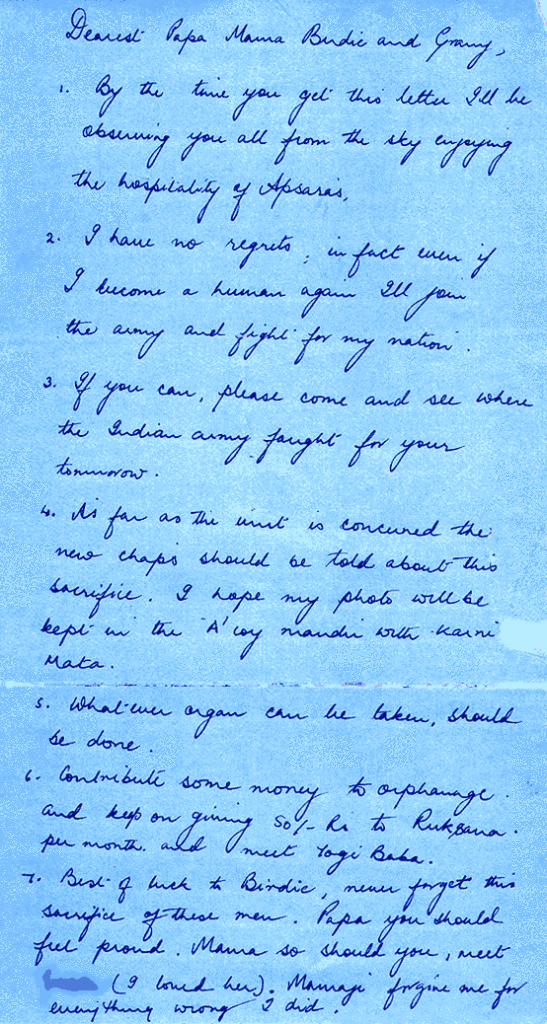 |
| The last letter |
 |
Last Letter
|
 |
| The fighting-point |








